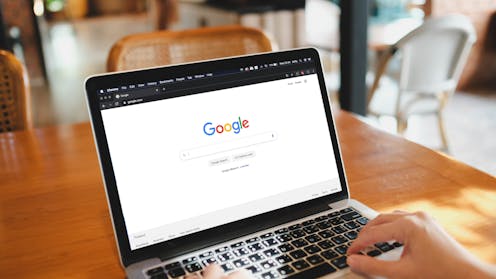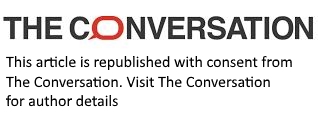Australians will soon need their age checked to log into online search tools – here’s why
- Written by Lisa M. Given, Professor of Information Sciences & Director, Social Change Enabling Impact Platform, RMIT University

By the end of this year, the experience of using search engines in Australia won’t be as simple as it has always been.
That’s thanks to a new online safety code announced yesterday by Australia’s eSafety Commissioner, Julie Inman Grant. Among other measures, it will require all Australian users to provide assurance of their age when they sign into a search engine account.
So what’s the new code about? How will it work in practice? And how exactly will it affect kids – and adults – in Australia who use search engines such as Google?
What’s in the new code?
The code orders providers of internet search-engine services such as Google and Microsoft (which owns Bing) to “implement appropriate age assurance measures for account holders” within six months.
The code requires providers to review and mitigate “the risk that Australian children will access or be exposed to online pornography, high-impact violence material, and self-harm material” in search engine results.
While the code does not define the age of a “child” as being under 18, or another age, a search engine must apply tools and settings that “at a minimum” filter out online pornography and extremely violent material from search results. Providers must also ensure advertising in these content areas is not served up in search results to child account holders.
Currently, Google account holders must be at least 13 years old.
The code creates several other rules for search engine providers that will impact everyone.
For example, providers must “prevent autocomplete predictions that are sexually explicit or violent” and prominently display crisis-prevention information, such as helplines, in the results for queries relating to topics such as self-harm, suicide and eating disorders.
Search engine providers will also have to blur some images in search results by default to reduce the risk of kids inadvertently accessing or being exposed to pornographic or violent material. And they will have to provide parental controls to limit or alter children’s access to adult material.
On top of these measures, the code requires search-engine providers to report to eSafety, invest in safety and moderation teams, and engage with community organisations.
The new code has been in development since July 2024. It was co-drafted by the Digital Industry Group Inc, an industry association representing tech companies including Google, Meta and Microsoft. A single breach could result in a search engine provider copping a fine of up to A$49.5 million.
How will the code work in practice?
The code does not spell out the measures to be used to assure someone’s age.
They could including asking for government-issued ID or be similar to strategies currently being assessed for the Australian government’s under 16s social media ban, such as facial recognition technology.
Yet, the government’s recent age assurance trials highlighted concerns about the accuracy of age estimation tools, despite claims of their overall effectiveness.
Changing how people search
Once implemented, age assurance requirements will likely change how people engage with search engines and other applications.
Google is used by more than 90% of Australians and for more than just searching. The Google ecosystem includes Gmail, Google Drive, and Google Maps, providing seamless integration between search and other tools and tasks.
Repeated age assurance requests could disrupt the seamlessness of content-sharing across devices that users now experience.
Many people also opt to remain logged into their accounts on multiple devices, to quickly enable cross-device activities. This means within a family, users of multiple ages may access content on a single account, even when they don’t intend to do so.
Will search engines need to change this functionality, to more regularly log users off their accounts, and reconfirm the account holder’s age? And how will the code affect features such as Google’s “incognito mode”, which is used for private searching?
The code will apply to “any features integrated within the search functionality and the user interface” of the service, including results generated by artificial intelligence (AI). This means results generated by Google’s Gemini AI service fall under the code, alongside traditional search results.
However, the code doesn’t apply to “standalone applications or tools that are not integrated within the internet search engine service”. This means that while a browser extension such as ChatGPT for Google may fall under the code, as an integrated search engine service, the standalone ChatGPT app could be excluded.
This may make searching even more confusing for users, as many people may not understand the limitations of treating generative AI tools like search engines – but they are not.
Will the code work?
As with all age assurance checks, there may be ways people can get around these new search engine controls.
For example, they may use VPNs to trick the system into believing they are outside of Australia (and therefore not subject to age assurance checks). Or, children may access content on older people’s accounts and devices.
However, the code does preempt concerns that children might get around controls by simply not logging in to their accounts. And, the code’s insistence on reporting mechanisms means people of all ages will be able to report material and raise complaints about potential code violations.
In this way, the code seems to reflect the government’s previously proposed (but now, paused) “digital duty of care” legislation, which aimed to hold technology companies to account for the content they provide.
One crucial question remains: will the steps companies take to comply with the code meet Australians’ expectations for seamless, integrated search practices and personal privacy as they access information online?
Authors: Lisa M. Given, Professor of Information Sciences & Director, Social Change Enabling Impact Platform, RMIT University





